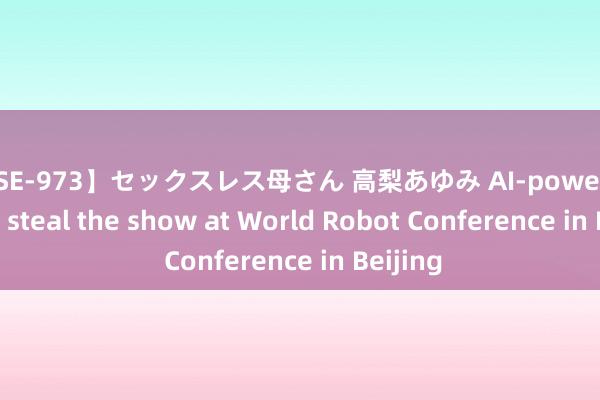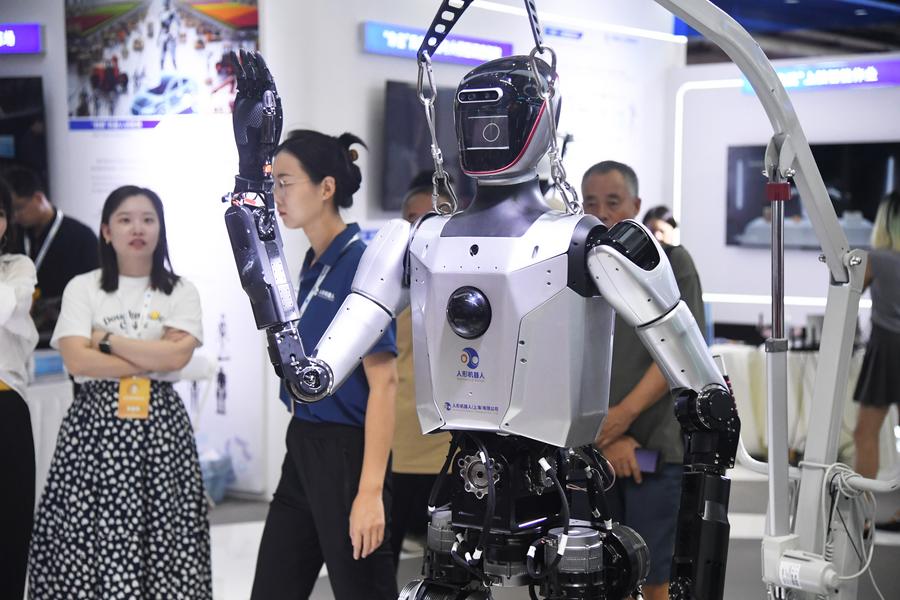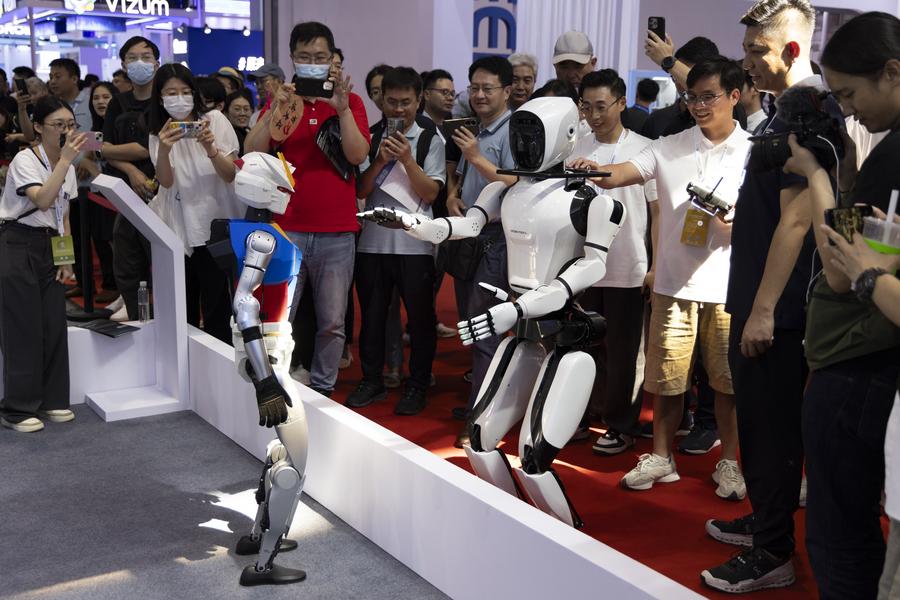-
【DSE-973】セックスレス母さん 高梨あゆみ AI-powered robots steal the show at World Robot Conference in Beijing
发布日期:2024-08-26 20:00 点击次数:161
BEIJING【DSE-973】セックスレス母さん 高梨あゆみ, Aug. 24 (Xinhua) -- At the ongoing 2024 World Robot Conference in Beijing, a stage no stranger to astonishing innovations in the sector, robots driven by artificial intelligence (AI) are not only stealing the spotlight once again but also underscoring their game-changing impact on the industry.
第四色官网Amid the array of AI-powered robotic technologies dazzling eager audiences and professional attendees, Unitree G1, a two-legged humanoid robot standing about 1.3 meters tall and weighing approximately 35 kg, garnered much attention.
While its sleek, streamlined design and polished, futuristic appearance captured many eyes, the robot's appeal to potential buyers mainly lies in its integrated robot unified large model, enabling it to develop and refine its skills continuously.
This robot also stands out with several other noteworthy features. According to its developer, Unitree, a Hangzhou-based robotics startup, the humanoid robot can move at 2 meters per second and features advanced three-finger force control hands, with a maximum knee joint torque of 120 Newton meters.
"This model, launched this year, starts at just 99,000 yuan (about 13,874 U.S. dollars) and has already been adopted by numerous laboratories and companies," said Huang Jiawei, marketing director at Unitree.
Many industry insiders see humanoid robots and general AI as the zenith of global technological innovation, marking a new frontier for future industries and a fresh engine for economic growth. Breakthroughs in AI have become a crucial driving force behind the advancement of humanoid robots, and the world is witnessing a surge in the integration of humanoid robots with general AI.
In China, a major global player in both humanoid robots and AI sectors, the practical application of these robots is evolving rapidly. No longer just performing flashy tricks, advanced AI-powered robots are increasingly being integrated into industrial settings, working alongside humans.
At the event, UBTECH Robotics, a leading robotics firm based in Shenzhen, south China's Guangdong Province, showcased robots performing tasks such as intelligent transportation, quality inspection, and chemical handling on automotive production lines.
This year, the company's humanoid robots have already been deployed at major car manufacturers like Dongfeng Liuzhou Motor, Geely Auto, and FAW, marking a significant step toward large-scale application in manufacturing.
"AI models have greatly accelerated the development of humanoid robots," said UBTECH Humanoid Robot Motion Control Algorithm Lead Greg Ge. "Currently, humanoid robots in car factories operate at about 20 percent of human efficiency, but we expect that figure to reach nearly 100 percent within the next one to two years. Robots can work 24/7, which means their overall efficiency will surpass that of humans."
Speaking with Xinhua, Ge envisions a future where AI-driven humanoid robots and humans work together more frequently, particularly in dangerous environments or requiring heavy labor. In his view, humanoid robots will increasingly integrate into human life, whether assisting in daily tasks or providing services in a friendly and interactive manner.
Another big hitter at this year's event is the embodied AI robot "Tiangong," which captivated audiences by engaging in conversations, receiving and responding to voice commands, and grasping and placing objects in designated locations. This capability is powered by a large visual-language model trained on an embodied AI platform, ensuring the robot's understanding of various situational tasks.
Che Zhiping, Embodied AI Team Leader of the Beijing Embodied Artificial Intelligence Robotics Innovation Center (or HUMANOID), the developer of "Tiangong," explained that the concept of "embodied AI" can be understood as an "AI with a physical form."
This concept enables better interaction between the digital and physical worlds. In future everyday scenarios, whether dining out or shopping, humanoid robots will increasingly integrate into human life, offering both a friendly presence and practical assistance, Che added.
According to Kong Lei, director of the Beijing Economic-Technological Development Area Administrative Committee, the area, as the permanent home of the World Robot Conference, aims to establish a production capacity of more than 10,000 embodied AI robots by the end of 2026.
"In the 55 years since the first humanoid robot was introduced in 1969【DSE-973】セックスレス母さん 高梨あゆみ, there has never been a moment closer to making the dream a reality," said Xiong Youjun, general manager of HUMANOID. "AI has ushered in the 'iPhone moment' for humanoid robots." ■


